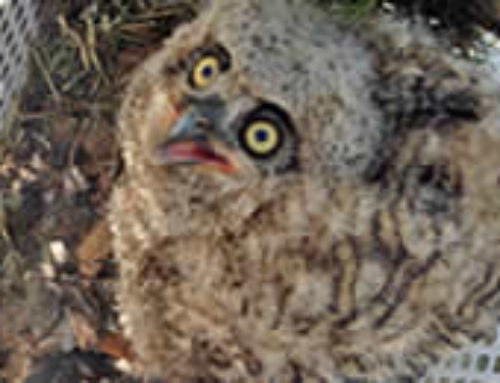The short answer is no. There are three major categories of white animals. The first is genetically white – white tigers receive a recessive white allele from each parent. If two white tigers mate, then all the offspring will be white. A heterozygous normal phenotype mated with a white phenotype would yield half normal and half white. Genetically white animals are usually a true white; dark stripes, rings or masks usually appear the same color (sometimes diluted) as found in the normal phenotype. The eyes are the normal color.
Albinism occurs when melanin is not produced by melanocytes. Melanin is the pigment that colors our skin. Sunlight stimulates its production. The melanin provides protection from UV damage. This protection extends to the eyes. Without melanin to protect them, eyes suffer from many issues including photosensitivity.
Albinism is easily identified by the striking red eyes. Eyes appear red or pink because without melanin in the iris, the capillaries inside the eye show through. Even animals that have genetically blue eyes will have a pink cast because the melanin helps provide opacity. The coat color will be a creamy white to pale yellow – the color isn’t a true white. Dark markings will be expressed as gray or pale tan. Most animals express as completely albino, but there are cases when only certain parts of the body are affected.
Many believe that albinism is a freak occurrence. However, albinism is actually genetic. It is a recessive trait that can be inherited. Most types strike males and females equally, but there is one type that is X-linked. The melanocytes are normal, but the body either doesn’t produce a necessary enzyme or produces a defective enzyme. Therefore, the chemical reaction necessary to produce melanin cannot occur.
Many believe that albino animals are not successful in the wild because they lack protective coloration. While this may be true for prey animals, it doesn’t explain the same phenomenon in predators like raccoon and raptors. The answer may lie in the extreme eye problems suffered by these individuals. In addition to focusing problems, albinos sometimes suffer from spasmodic stuttering. In addition, individuals suffer from extreme photosensitivity. Light cannot be regulated by pupil size since no matter how small the pupil becomes, light penetrates the colorless iris. The individual may not see well enough to evade predators or hunt for itself.
The last cause of white animals involves defective pigment producing cells. It affects all pigment producing cells, not just the melanin producing cells. Either the cells fail to develop or the cell for whatever reason does not deposit pigment. Leucism is a genetic mutation. The defective cells may cover the whole body or they may occur in patches. Piebald animals express patches of normal coloration among a background of white. Selective breeding produces sufficient numbers of leucistic individuals to breed for the trait. Partially leucistic breeds are common in dogs, cats and horses.
Because all pigment producing cells are affected, leucism produces fur and feathers that are more of a true white. Dark markings reveal themselves as either pale shadows or not at all. Interestingly, the eye color is normally pigmented. The reason is that the cells that give rise to the iris are different in origin from those that form fur and feathers.
It is easy to determine if an animal is an albino because of the red eyes. The determination of genetically white versus leucistic is a little more difficult since produce normal colored eyes and true white coat / feathers. Since genetic testing is usually prohibitive, the deciding factor may be the frequency of expression. Leucism is a genetic mutation while genetically white expression is a recessive gene. Piebald individuals may be partial expression of leucism, but some genes also create a piebald appearance. In the absence of genetic testing, only extensive breeding across several generations will give a definitive determination of cause.






Leave A Comment